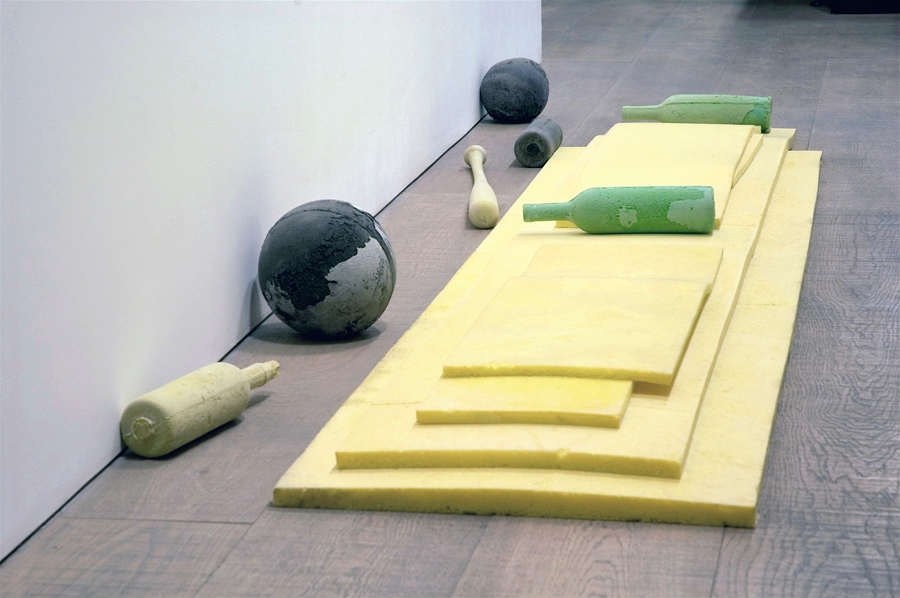Over the last year, the notion that kept popping up as the ultimate critical deathblow for artworks and exhibitions was ‘sentimentality’. Whatever happened to the classical notion of pathos in contemporary evaluation? Has the growing entrenchment of institutional critique today pushed the art producer into his last stand as an aesthetic strategist, aiming for institutional nuance and white-cube refinement? The work of Phillip Lai appears to answer in the affirmative. As it happens, the Kuala Lumpur-born, London-based artist’s appropriation of readymade objects is concrete and analytic – displaying their orientation within the social, economic and cultural parameters of the gallery space. However, what makes his work alive and continuously interesting to my eyes is that it portrays an artist in search of a meaning of which he himself does not claim to be able to fully explain.
The everyday objects in Lai’s spatial assemblages seem to have chosen him instead of the other way around – comparable to the way Duchamp always described his early readymades. They are inspired by the artist’s casual encounters with his surroundings, via images, street situations or communal spaces. These encounters generate a process of artistic depiction of found materials that appear to be on the verge of collapsing altogether.
For his 2009 London exhibition at Modern Art, Lai recreated the contents of a small truck in the gallery space, placing them in a grubby display case, which contained a rubber tyre, a large crumpled sheet of dusty polythene and a piece of wood stretched across the inset chamber, as if keeping its sides standing up. For this same occasion Lai cast a set of variously sized mattresses, balls, bottles and a baseball bat in sponge foam. Another work featured the outlines of a London corner shop in aluminium frames resting, unfixed, upon a number of fruit stones.
What these works have in common is that they all claim to represent everyday life and simultaneously thematise an advanced vulnerability throughout this process. The introduction of the readymade is normally understood as an artistic strategy to subvert an artistic aura. With Lai’s readymade objects, this artistic sentiment seems to be introduced anew, including the moral and aesthetic examination that come with it. Hence Lai lays bare a sentimental ambiguity at the base of his artistic production and within the formal codes of institutional critique, making his work a challenging proposition in today’s artistic labour.
This article was first published in the March 2011 issue.
